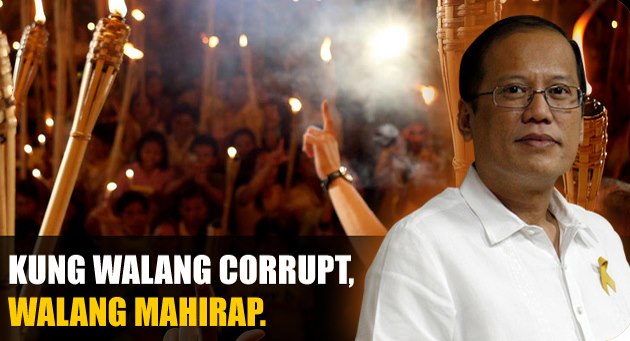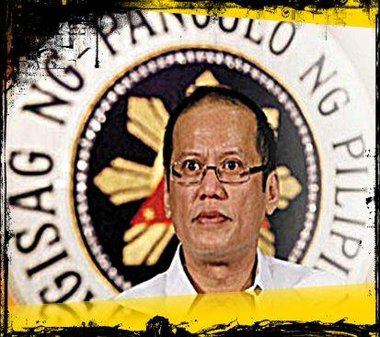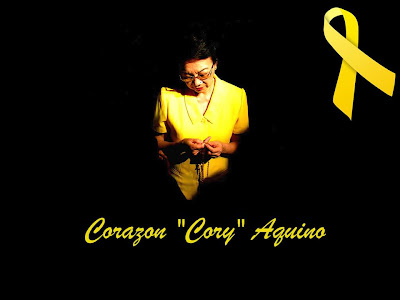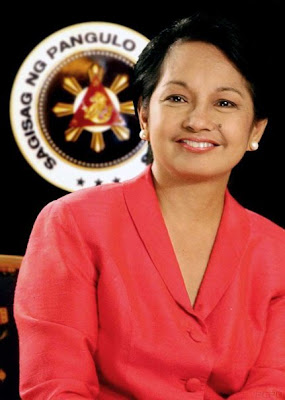The Old Cojuangco Fortune & the First Philippine
Republic Funds
Noynoy
COJUANGCO Aquino y Hocus Pcos, great grandnephew of Ysidra Cojuangco, is
two year old as Philippine
"President"
Demetria Sumulong & JOSE COJUANGCO (nephew of Ysidra
Cojuangco), grandparents of "President" A_NOY Cojuangco Aquino
ON the first anniversary of the installation of
"President" A_NOY Cojuangco Aquino y HOCUS PCOS, let me talk of his
family from the maternal side, the Cojuangcos. Let me talk of the controversial history of the where the Cojuangco wealth
purportedly came from.
Why the Filipinos should run after the Cojuangco family, the
famed family of the late President Corazon Cojuangco-Aquino and her only son,
the "incumbent" Malacanang occupant, it is not only the land reform
issue of Hacienda Luisita but more so, the first Philippine Republic
REVOLUTIONARY FUNDS said to amount to several BILLION pesos.
During the Spanish period, Gen. Antonio Luna, then chief of
staff of the revolutionary army, turned over revolutionary funds to his
paramour Ysidra Cojuangco for safekeeping. When Luna was assassinated
[apparently upon orders of the fledgling Philippine Republic President Emilio
F. Aguinaldo, the Cojuangcos kept the treasure all to themselves — a tradition
of treason and greed that has been kept alive by today's Cojuangcos, as well
as, their Aquino branch.
--Herman Tiu-Laurel
http://jesusabernardo.newsvine.com/_news
/2010/03/04/3978321-the-history-of-the-cojuangcos-ownership-of-hacienda-luisita
Now, Ysidra Cojuangco y Estrella was the eldest child of the
Chinese immigrant great grandfather of current Philippine "President"
Noynoy Aquino. Jose Cojuangco (I), the lolo of the late ex-President Corazon
Cojuangco-Aquino, was the son of a Chinese immigrant from Fujian. His Chinese
name was Co Giok Kuan who received the Christian name "Jose." He
worked as a carpenter before becoming a building contractor and marrying
Spanish meztisa [Antera Estrella]... His children were Ysidra, born 1867;
Melicio, born 1871; and Trinidad, born 1876 (Dobbin, pp. 150, 160-161)."
It's not only columnist Tiu-Laurel who is saying that the
funds of the First Republic fell into the hands of the Cojuangcos. This has
been discussed in the study of another columnist, Larry Henares. Devoting a
series to reveal that Gen. Luna left a lovechild by Ysidra Cojuangco--who he
concludes to be Antonio Cojuangco III of PLDT fame--Henares also bares how the
Cojuangcos suddenly amassed a big fortune, affording their purchase of large
tracts of sugar and rice lands.
Bed-ridden but sound of mind, she was irrepressible,
regaling us with stories of Dona Ysidra, her neighbor in Sta. Rosa, Nueva
Ecija, whom she met when she was 10 years old, and who was going to be her
godmother, ninang sa casal, were it not for the distance and difficulty of
travel. We recorded her saying that Ysidra admitted that Luna was indeed her
very close friend, and that Luna left her valuables, not once but regularly on
many occasions. When asked how much value was involved, Encarnacion replied
that while she is not sure of the exact value, it was certainly in huge
quantities since several huge caskets were involved. Manapat asked her if she
knew that there were more than one shipment. She emphatically said yes, the
shipments were a regular thing!! Not only was Encarnacion a friend and
confidant of Dona Ysidra, she is also the daughter of Eulalio Saulo who
confirmed to her the story as one of the military escorts of the gold shipment
to Ysidra. As far as we know this is the first direct evidence of a Cojuangco
(and Ysidra at that) admitting what many Luna contemporaries long alleged, that
the source of the Cojuangco fortune was the gold commandeered by Luna and
regularly turned over to Ysidra. The combined assets controlled by the Cojuangcos
total about P200 BILLION." (bold supplied)
XXXX "There was an earlier account recounted by
historian Carlos Quirino in an unpublished book commissioned by Danding
Cojuangco, about a shipment of gold vessels commandeered by General Antonio
Luna from churches in Pampanga, collected for him by Tiburcio Hilario, Pampanga
governor, brought to Paniqui and entrusted to Ysidra for safekeeping before
Luna left for Cabanatuan to meet Aguinaldo, only to be assassinated there. Aha,
so gold was brought by Luna from both the Ilocos (through Saulo) and Central
Luzon (through Hilario) to Ysidra! With the First Republic on the run and the
Americans inquiring about the gold, Ysidra dumped the gold into a well,
retrieved it later and used it to build the Cojuangco fortune."
-- Larry Henares
http://www.philippinefolio.com/contdetail.php?id=8&id_app2=41&id_app3=00366
Another person who attests to how the Cojuangcos got hold of
the wealth under the care of Gen. Luna as Chief of the Army of the Philippine
Republic is author/historian.ex-Ambassador Rafaelita Hilrio Soriano,
granddaughter of Pampanga's Revolutionary Governor, Tiburcio Hilario y Tuason.
A cousin of the "Great Propagandist" Marcelo H. del Pilar, Gov.
Hilario was elected in absentia as military/revolutionary governor of his
Pampanga and known as the 'Brains of the Revolution in Pampanga.
http://philippines-islands-lemuria.blogspot.com/2011/02/18-february.html
Ms. Soriano relates that her grandfather, Gov. Tiburcio,
kept the revolutionary treasures in sacks, including gold treasures such as
gold plates, chalices, that were commandeered from Bacolor, Guagua, and San
Fernando in Pampanga. Jose Cojuangco I received the treasure.
Ms. Soriano : I want to refute the statement that it was
believed the money for the revolution did not go to the Cojuangcos. This is a
statement of fact. The money, one million silver pesos, was brought by my old
grandfather, Tiburcio Hilario, then governor of Pampanga, and given to Antonio
Luna. Three days after, Antonio Luna was assassinated. After he was
assassinated, where did the money go? The money went to the town where the
Cojuangcos lived. Yes, I mean it. It was placed in the package of pacbet on the
railroad. Because Luna was already dead, nobody made a claim for the money.
They found that the money was with some old clothes. With the baggage and the
old clothes, the money was first offered to a Mr. Garcia, Capitan Garcia. He
was then the richest man in the town. Knowing where it came from, he refused
it. The one who accepted the money was JOSE COJUANGCO [I]. (bold supplied)
http://books.google.com/books?id=ZQ5vAAAAMAAJ&q=%22Dr.+Miranda+Sino+pa+po+ang+gusting+magtanong%3F%22&dq=%22Dr.+Miranda+Sino+pa+po+ang+gusting+magtanong%3F%22&hl=en&ei=J7ZeTbCaIo3PrQeI9OziDQ&sa=X&oi=book_result&ct=result&resnum=1&ved=0CCgQ6AEwAA
The paramour of Gen. Luna did not lead actually lead a quiet
or simple life following Aguinaldo's orders to have Luna assassinated.
YSIDRA,Ysidra, or Isidra, was "considered one of the richest women in the
Philippines in her time, from 1900-1950", helping found the Philippine
Bank of Commerce (PBC) in 1938 (Crisostomo, p. 8).
Ysidra was no ordinary woman for she "was charged with
life and commercial drive." She dealt not only with rice and sugar but
also with gango or small dried shrimps, money lending and more (Pan, p. 153).
She helped established the Paniqui Sugar Mills in 1928, producing sugar for
domestic as well as export markets, and likewise, alcoholic drinks. In the
early 1930s, she and her brothers also partnered with the Jacinto and Rufino
families, venturing into stockbroking to establish the Finance and Mining Investments
Corp. Later in the same decade, the three families set up the PBC, which was
the first bank in the country to be exclusively owned by Filipinos.
Henares continues:
With the death of the father Don Jose, Ysidra the spinster
became the head of the family. The Cojuangco family owned some 12,000 hectares,
controlled the rice trade of the province and lent so much money to planters
and businessmen of Tarlac, Pangasinan and Nueva Ecija that Justice Antonio G.
Lucero, the family lawyer thought she practically owned Central Luzon.
http://www.philippinefolio.com/contdetail.php?id=17&id_app2=203&id_app3=01058
Newsbreak also reports:
Ysidra and the four brothers were determined to make money
work for them. They gave out loans to townsfolk for expenses in fiestas,
litigation, gambling losses and other reasons, with rice lands as collateral.
Many of the borrowers were not able to pay back the loans, so the Cojuangcos’
landholdings expanded by leaps and bounds. By the 1930s, they were considered
the biggest land-owning clan in the whole of Central Luzon with tens of
thousands of hectares to their name.
http://newsbreak.com.ph/index.php?option=com_content&task=view&id=6815&Itemid=88889066
Note that Gen. Antonio Luna was assassinated in 1899.
Ysidra, according to Isabelo Crisostomo's biography of Cory, became rich in
"her time" that began in 1900. Now, where did her money come from?
Necessarily woven into this story is the real identity of
the child of Ysidra. Her younger
brother, Melicio (or Melencio) Cojuangco, married Tecla Chichioko and fathered
four sons: Jose, Juan, Antonio and Eduardo (Pan, p. 154). [The eldest, Jose
Cojuangco, Sr., is in turn the father of Cory and Jose "Peping"
Cojuangco Jr. The father of Cory and lolo of Noynoy Aquino, Jose Cojuangco Sr.,
who married Demetria "Metring" Sumulong of Rizal, became a banker,
sugar magnate, hacendero and elected Tarlac congressman.
Antonio Cojuangco, whom Milecio and wife professed to be
their child, seems to be the real son of Ysidra. Henares cited a host of
evidence, including physical and mental resemblance to the Antonios and
differences with the Cojuangcos, the "Antonio" name that has been
passed on to PLDT's Tonyboy, the "almost conspiratorial" secrecy of
Antonio C.'s birthdate, and the issue of an unnamed body being buried with
Antonio C. vis-a-vis the disapperance of Hen. Luna's body. Ayon kay Henares:
A walking distance from the Barasoain Church in No. 540
Paseo del Congreso, the town's main street, stands the old mansion of the
Cojuangcos... General Antonio Luna used to sleep there. Aha!
XXX The other
candidate Antonio was born according to his Ateneo 1918 Annual in the year
1899. In that entire Annual all graduates listed ONLY the YEAR of their birth,
not the month or the date... all previous and subsequent Annuals, especially
those listing the other brothers, gave the EXACT date, month and year of the
graduates' birth... the entire 1918 Annual, like his tombstone in Manila
Memorial, would be changed to accommodate the secrecy wanted by one single man.
(bold supplied)
As a matter of fact, if Antonio were born in Malolos instead
of Paniqui, we will never know, because the Birth Registries in eight volumes,
supposedly covering the period from October 1775 to 1904, stops at February
1899 before Antonio might have been born. What is most suspicious is that a tag
that describes the missing volume was left inside the exhibit, suggesting that
the missing volume actually exists but was stolen.
http://www.philippinefolio.com/contdetail.php?id=8&id_app2=41&id_app3=00368
No doubt, the Cojuangcos made great use of the wealth that
came into their possession. Jose, who was "Left a great deal of
money" by Ysidra, was able to enter politics (Pan, p. 154), becoming a
Tarlac congressman. His father, Melicio, earlier entered politics, utilizing
the family wealth to his political advantage (Yoshihara). And of course, there
were the three Benignos who all run for public office, including the present
"President" Noynoy C. Aquino.
Arguably, it had been better that the Republic's wealth fell
into the Cojuangco's hands instead of the imperialist American's hands. Also,
in fairness to Ysidra, she did tried to help the poor by being a
philantrophist. As according to Henares, when she died at the age of 93 on July
13, 1960 at the Makati Medical Center, she left IOU's of laborers and the poor
that totaled P2 million.
Ysidra used the First Philippine Republic money wisely,
letting the treasures earn instead of, well, simply keeping them buried or,
worse, spending it. Nevertheless, it's LONG OVERDUE that the nation's money be
RETURNED by the COJUANGCOs to where they belong. The Cojuangcos never truly
owned the First Republic's treasures and besides, their greed has already borne
them much more than they have returned, which brings to mind the rather
infamous case of their land-grabbing the Hacienda Luisita way. To return these
funds is the moral thing to do. I'm sure that such is what Gen. Luna would have
wanted as well, right Tonyboy?
P.S.
If the Cojuangcos ever return the treasures f the First
Republic, I'll surely change course and support Noynoy Aquino as
"President," no matter his HOCUS PCOS status. Although that seems
like wishing for the blue moon further turned yellow....
_____
References:
Dobbin, Christine. Asian entrepreneurial minorities:
conjoint communities in the making of the world-economy 1570-1940. Taylor &
Francis,
1996http://books.google.com/books?id=kFS0Y54oi_gC&pg=PA161&dq=%22jose+cojuangco%22&hl=en&ei=oophTb7qNIjprQeRkZDGAg&sa=X&oi=book_result&ct=result&resnum=7&ved=0CEYQ6AEwBg#v=onepage&q=%22jose%20cojuangco%22&f=false
Crisostomo, Isabelo. Cory--profile of a president. Brandern
Books, 1987.http://books.google.com/books?id=iW_ddLowBYkC&pg=PA9&dq=%22jose+cojuangco%22&hl=en&ei=iIphTfr9Cs2qrAf6jtDrAg&sa=X&oi=book_result&ct=result&resnum=3&ved=0CC8Q6AEwAg#v=snippet&q=jose%20cojuangco&f=false
Yoshihara, Kunio. Philippine industrialization: foreign and
domestic capital. Ateneo de Manila University Press, 1985.http://books.google.com/books?ei=xcVhTcXDHMbVrQetsoSjAg&ct=result&id=sJe0AAAAIAAJ&dq=%22Sugar+Mills+with+its+own%22&q=%22muscovado+sugar+mills%22#search_anchor
Parreno, Earl g. "Where did the Cojuangcos’ wealth
really come from?" Thursday, 24 September 2009.
http://newsbreak.com.ph/index.php?option=com_content&task=view&id=6843&Itemid=88889066
THE FAMILY TREE OF CORAZON COJUANGCO
AQUINOhttp://blog.cathcath.com/the-family-tree-of-corazon-cojuangco-aquino-6738.html
Photo credits:
http://filipinoforum.net/phpBB3/viewtopic.php?f=5&t=4852
http://philippine-revolution.110mb.com/luna_a.htm
http://www.obsidianportal.com/campaign/old-skool-gamers-sow-campaign/wikis/treasure-earned
http://books.google.com/books?id=iW_ddLowBYkC&pg=PA9&dq=%22jose+cojuangco%22&hl=en&ei=iIphTfr9Cs2qrAf6jtDrAg&sa=X&oi=book_result&ct=result&resnum=3&ved=0CC8Q6AEwAg#v=snippet&q=jose%20cojuangco&f=false












